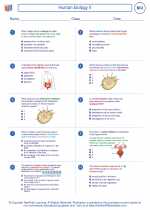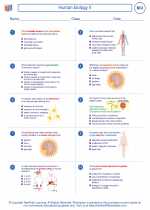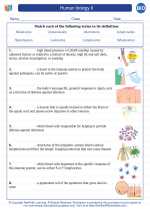Adaptation in Biology
In biology, adaptation refers to the process by which an organism becomes better suited to its environment in order to ensure its survival and reproduction. This can occur through changes in the organism's physical structure, behavior, or physiological processes.
Types of Adaptations
There are two main types of adaptations: structural and behavioral.
Structural Adaptations
- Morphological Adaptations: These are physical adaptations that involve changes in an organism's body structure, such as the shape of its beak, the length of its limbs, or the thickness of its fur. For example, the thick fur of polar bears helps them stay warm in cold environments.
- Anatomical Adaptations: These adaptations involve changes in an organism's internal body structures, such as the shape of its digestive system or the structure of its respiratory organs. For instance, the gills of fish are anatomical adaptations that allow them to extract oxygen from water.
Behavioral Adaptations
- Migratory Behavior: Many bird species migrate to different locations based on seasonal changes in temperature and resource availability.
- Hunting Strategies: Predators develop specific hunting behaviors to catch their prey, such as the cooperative hunting behavior seen in wolves.
Examples of Adaptations
Some classic examples of adaptations in the animal kingdom include:
- The camouflage of chameleons, which allows them to blend into their surroundings and avoid predators.
- The long neck of giraffes, which enables them to reach high leaves for food in their habitat.
- The development of webbed feet in aquatic animals, which helps them navigate through water more effectively.
Study Guide for Adaptation
To understand the concept of adaptation in biology, it's important to study the following key points:
- Definition of adaptation and its significance in the survival and reproduction of organisms.
- Identification of structural and behavioral adaptations, along with examples of each type.
- An understanding of how specific adaptations help organisms thrive in their respective environments.
- Recognition of the role of natural selection in driving the process of adaptation over generations.
- Exploration of human-induced changes and their impact on the adaptations of organisms (e.g., antibiotic resistance in bacteria).
By mastering these concepts, students can develop a comprehensive understanding of adaptation in biology and its relevance in the natural world.
.◂Biology Worksheets and Study Guides High School. Human biology II
Worksheet/Answer key Human biology II
Human biology II  Worksheet/Answer key
Worksheet/Answer key Human biology II
Human biology II  Worksheet/Answer key
Worksheet/Answer key Human biology II
Human biology II  Vocabulary/Answer key
Vocabulary/Answer key Human biology II
Human biology II  Vocabulary/Answer key
Vocabulary/Answer key Human biology II
Human biology II  Vocabulary/Answer key
Vocabulary/Answer key Human biology II
Human biology II  Vocabulary/Answer key
Vocabulary/Answer key Human biology II
Human biology II  Vocabulary/Answer key
Vocabulary/Answer key Human biology II
Human biology II  Vocabulary/Answer key
Vocabulary/Answer key Human biology II
Human biology II  Vocabulary/Answer key
Vocabulary/Answer key Human biology II
Human biology II 

 Worksheet/Answer key
Worksheet/Answer key
 Worksheet/Answer key
Worksheet/Answer key
 Vocabulary/Answer key
Vocabulary/Answer key
 Vocabulary/Answer key
Vocabulary/Answer key
 Vocabulary/Answer key
Vocabulary/Answer key
 Vocabulary/Answer key
Vocabulary/Answer key
 Vocabulary/Answer key
Vocabulary/Answer key
 Vocabulary/Answer key
Vocabulary/Answer key
 Vocabulary/Answer key
Vocabulary/Answer key

The resources above cover the following skills:
LIFE SCIENCE (NGSS)
From Molecules to Organisms: Structures and Processes
Students who demonstrate understanding can:
Develop and use a model to illustrate the hierarchical organization of interacting systems that provide specific functions within multicellular organisms.
Plan and conduct an investigation to provide evidence that feedback mechanisms maintain homeostasis.